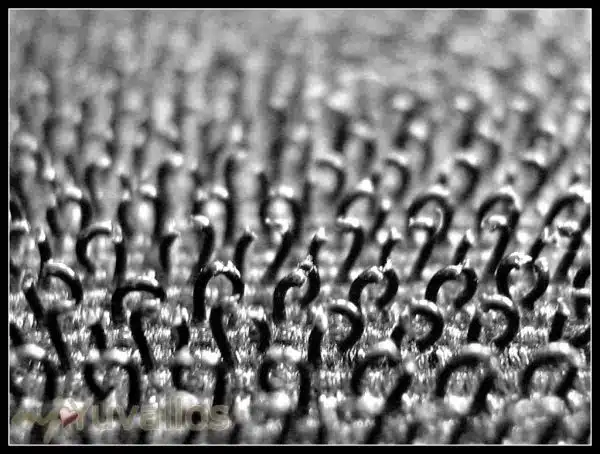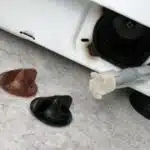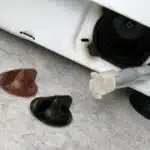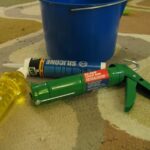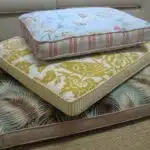Velcro is a widely used fastener in clothing, shoes, bags, and other household items. Its popularity is due to the ease of use and its ability to hold things together securely. However, over time Velcro can accumulate dirt, lint, and other debris that can affect its effectiveness. This raises the question: Can you wash Velcro? The answer is yes, but it needs to be done properly to avoid damaging the fastener.
As a laundry care expert, I receive questions about how to properly wash various types of fabrics and materials. Velcro is one item that frequently comes up in these discussions. Many people are unsure if washing Velcro will damage it or not. In this article, I will provide expert advice on how to properly clean Velcro to maintain its functionality and prolong its lifespan. Whether you are dealing with clothing or household items with Velcro closures, this article will guide you through the proper steps for cleaning them without causing any damage.
Understanding Velcro And Its Characteristics
Velcro is a type of fastener that is commonly used in various applications, including clothing, shoes, bags, and even industrial equipment. It consists of two parts: the hook and the loop. The hooks are made of stiff nylon or plastic, while the loops are made of softer fibers. When the two parts are pressed together, they create a strong bond that can withstand a considerable amount of force.
Velcro is known for its durability and longevity. However, like any other material, it can wear out over time due to repeated use and exposure to elements such as dirt, dust, and moisture. There are different types of Velcro available in the market with varying degrees of strength and durability. Some types are designed for heavy-duty applications, while others are more suitable for lighter use.
It is essential to understand the characteristics of Velcro before attempting to clean it properly. Different types may require different cleaning methods depending on their composition and intended use. Failing to follow appropriate care instructions can result in damage or reduced effectiveness of the material. Therefore, it is crucial to identify the type of Velcro being used and determine the appropriate cleaning method based on its characteristics. Understanding these aspects will ensure that Velcro remains functional for longer periods and maintains its strength even after multiple uses. As such, it is necessary to explore why cleaning your Velcro regularly should be an important part of your laundry routine.
Reasons For Cleaning Velcro
Cleaning Velcro is an essential task that should be done regularly to maintain its quality and efficiency. There are many benefits of cleaning Velcro, including the removal of dirt, debris, and other particles that can clog the hooks and loops. This can cause the Velcro to lose its grip, making it less effective in holding things together.
Methods for cleaning Velcro depend on the type of material it is attached to. For example, if the Velcro is attached to a piece of clothing, it can be washed in a washing machine or by hand. In contrast, if the Velcro is attached to something like a backpack or shoes, it may require more specialized cleaning methods such as using a brush or vacuum.
Regularly cleaning Velcro can also help prolong its lifespan. By removing dirt and debris from the hooks and loops, you prevent them from becoming worn down over time. This means that your Velcro will continue to function properly for longer periods.
Here are some benefits of proper cleaning of Velcro:
- Increases durability
- Maintains efficiency
- Prevents loss of grip
- Saves money on replacements
- Improves appearance
In conclusion, taking care of your Velcro through regular cleaning has many benefits. It increases durability, maintains efficiency, prevents loss of grip, saves money on replacements and improves appearance. Proper cleaning methods depend on the type of material it is attached to but are essential for maintaining its usability over time. The next section will discuss the importance of proper cleaning in more detail and how this can impact your daily life.
The Importance Of Proper Cleaning
Proper cleaning of velcro is essential to maintain its effectiveness. Without proper maintenance, velcro can accumulate dirt and debris that can reduce its ability to grip and hold items together. This can lead to frustration in situations where a secure hold is necessary, such as when using velcro on shoes or bags.
The importance of proper cleaning cannot be overstated when it comes to maintaining the functionality of velcro. To ensure optimal performance, it is recommended that users follow a regular maintenance routine. One tip for maintenance is to remove any debris from the velcro’s hooks and loops with a soft-bristled brush. This will help prevent any buildup from interfering with the bonding process.
Another important tip for maintaining the effectiveness of velcro is to avoid exposing it to extreme temperatures or harsh chemicals. These external factors can cause damage to the material, which may result in reduced bonding capability over time. By taking these precautions and following a consistent cleaning routine, users can extend the lifespan of their velcro and ensure optimal performance for years to come.
Moving forward, it is important for users to understand what materials are needed for cleaning velcro properly. By following these steps, they can effectively clean their velcro without causing any damage or reducing its effectiveness.
Materials Needed For Cleaning Velcro
To maintain the quality and longevity of your velcro, it is crucial to clean it regularly. There are various cleaning techniques that can be used to achieve this goal. One of the most effective ways to clean velcro is by using a soft-bristled brush or toothbrush to remove any debris that has accumulated over time. This technique is especially useful for small pieces of velcro, such as those found on shoes or clothing.
Another preventive measure that can be taken to keep your velcro in good condition is by avoiding exposure to harsh chemicals or extreme temperatures. Cleaning agents such as bleach or ammonia can cause damage to the fibers of the velcro and weaken its grip. Additionally, high temperatures can cause the adhesive on the back of the velcro to melt, making it less effective.
It is important to note that prevention is key when it comes to maintaining your velcro’s quality and functionality. By taking these preventive measures and using proper cleaning techniques, you can ensure that your velcro remains in excellent condition for a longer period of time. In the next section, we will discuss how to remove debris from velcro effectively without damaging it.
How To Remove Debris From Velcro
To properly maintain Velcro, it is essential to remove any debris that has become lodged in the hooks and loops. Removing debris from Velcro can be done using a few simple steps. The first thing to do is to examine the Velcro area closely and identify any areas where debris has accumulated.
Next, use a soft-bristled brush or a lint roller to gently remove any debris that you see on the surface of the hooks and loops. It is important to be gentle during this process, as rough brushing can cause damage to the Velcro. Once you have removed all visible debris, use a small pair of scissors or tweezers to remove any remaining particles that are stubbornly clinging on.
When removing debris from Velcro, it is important to avoid using water or any cleaning chemicals. These substances may damage the hook-and-loop material and reduce its effectiveness in fastening items together. By following these simple steps for removing debris, you can help extend the life of your Velcro and ensure that it continues to function effectively.
- Use a soft-bristled brush or lint roller.
- Be gentle during brushing.
- Use small scissors or tweezers for stubborn particles.
- Avoid using water or cleaning chemicals when removing debris.
- Proper maintenance extends Velcro’s lifespan.
With proper care and maintenance, your Velcro will continue functioning well for an extended period. However, some stains may need pre-treatment before washing. In such cases, there are several best practices for pre-treating stains on velcro that we’ll explore in the next section.
Pre-Treating Stains On Velcro
- Prior to cleaning stained velcro, it is important to remove any dirt and debris from the affected area. This can be done by gently vacuuming or gently brushing the velcro with a soft cloth.
- To pre-treat sticky residue, a mild detergent solution can be used. It is important to avoid abrasive cleaners as these can damage the velcro material.
- After pre-treating the velcro, it is important to rinse off the detergent solution with clean, warm water.
- To ensure the velcro is completely clean, it is recommended to repeat the pre-treatment and rinse cycle until the velcro is no longer sticky.
Removing Dirt And Debris
When it comes to Velcro maintenance, cleaning tips are essential to ensure its longevity. Before washing Velcro, the first step is to remove any dirt and debris from the surface. This is because dirt can get trapped in between the hooks and loops of the Velcro, which can cause it to stick less effectively.
To remove dirt and debris, gently brush the surface with a soft-bristled brush or use a toothbrush. Be sure to do this carefully so as not to damage the Velcro. Another option is to use a lint roller or tape to pick up any loose particles.
It’s important to note that pre-treating stains on Velcro should always start with removing any dirt or debris first. By following these cleaning tips for Velcro maintenance, you can ensure that your Velcro stays clean and effective for longer periods of time.
Pre-Treating Sticky Residue
When it comes to Velcro maintenance, pre-treating sticky residue is an important step in ensuring its longevity. Sticky residue can accumulate over time and cause the hooks and loops to stick less effectively. To remove this residue, start by gently brushing the surface with a soft-bristled brush or using a toothbrush. If that doesn’t work, you can use a lint roller or tape to pick up any remaining residue.
Choosing the right cleaning solution is also crucial when pre-treating sticky residue on Velcro. A mild detergent mixed with warm water is usually the best option for most types of Velcro. However, for tougher stains or more stubborn residue, you may need to use a stronger cleaning solution such as rubbing alcohol or vinegar diluted in water.
Once you’ve chosen the appropriate cleaning solution, apply it directly to the affected area and let it sit for a few minutes before wiping it away with a clean cloth. Be sure to rinse the Velcro thoroughly with clean water and allow it to air dry completely before using it again. By following these tips for pre-treating sticky residue on Velcro, you can ensure that your Velcro stays clean and effective for longer periods of time.
Preparing Velcro For Washing
Proper Velcro maintenance is essential to ensure its durability. Before washing, it’s important to prepare the Velcro properly. First, inspect the Velcro for any loose threads or debris caught in the hooks and loops. Use a soft-bristled brush or toothbrush to remove any dirt or particles that may have accumulated over time.
Next, check the label on the garment or item with Velcro attachments. Follow the manufacturer’s instructions carefully to prevent damage. Some materials may require hand-washing instead of machine-washing. If you’re unsure about how to care for your item, consult a professional laundry service.
Taking these steps before washing your Velcro will help prolong its lifespan and ensure it remains strong and durable. Proper maintenance ensures that it will continue to function as intended, securely fastening items together without becoming worn or frayed.
Transition: Now that you’ve prepared your Velcro for washing, it’s time to move on to the next step: how to wash Velcro in a machine without damaging it.
Washing Velcro In A Machine
Imagine the frustration of having a Velcro strap that no longer sticks, leaving your belongings vulnerable to falling or shifting. This can be particularly troublesome when it comes to items such as backpacks or shoes, where Velcro is often used for its convenience and adjustability. Fear not, as there are ways to restore Velcro’s stickiness and extend its lifespan through proper care.
When it comes to machine washing Velcro items, there are a few important tips to keep in mind. Firstly, ensure that any loose dirt and debris is removed from the item before washing to prevent clogging up the machine. Secondly, fasten any Velcro straps before washing to avoid snagging on other items in the load. Finally, opt for a gentle cycle with cool water and mild detergent to avoid damaging the hook-and-loop system.
It’s worth noting that while machine washing can be an effective way of cleaning Velcro items, it may not always be appropriate for delicate fabrics or intricate designs. In these cases, handwashing may be a better option. Continue reading for tips on how to properly handwash Velcro items without damaging them.
Handwashing Velcro
- In order to ensure that velcro is washed properly, it is important to take the necessary steps to prepare it for the washing process.
- The first step in preparing velcro for washing is to ensure that all dirt, dust, and debris is removed from the velcro fabric.
- Once the velcro has been prepped, it can be washed in a washing machine using a gentle cycle and mild detergent.
- After washing, velcro should be air dried to prevent damage to the fabric as well as any further accumulation of dirt and dust.
Preparing Velcro For Washing
Velcro serves as a versatile fastening solution for various items such as shoes, bags, and clothing. However, over time it accumulates dirt, debris, and other unwanted substances that can affect its performance. It’s essential to clean Velcro regularly, especially if you want to extend its lifespan and effectiveness. In this article, we will discuss how to prepare Velcro for washing and ensure compatibility with your cleaning frequency.
The first step in preparing Velcro for washing is to detach it from the item it’s attached to carefully. This process ensures that the Velcro doesn’t get tangled or damaged during the wash cycle. Once detached, use a soft-bristled brush or toothbrush to remove any visible dirt or debris. Avoid using abrasive materials that can damage the hooks and loops of the Velcro.
After brushing off any visible dirt or debris from the Velcro, you should inspect it for any damages or defects. If you notice any damages or defects such as missing hooks or loops caused by excessive wear and tear, consider replacing them before proceeding with washing. Also, ensure that the cleaning frequency is compatible with your item’s care label instructions. Proper preparation of Velcro for washing helps maintain its quality and functionality while preventing further damage due to improper handling during cleaning.
Washing Velcro Properly
Maintaining the quality and functionality of Velcro requires proper care and maintenance. One way to ensure this is by washing it correctly. Depending on the item, you can opt for either handwashing or machine washing. In this article, we will discuss how to handwash Velcro properly to ensure its longevity and effectiveness.
Before handwashing Velcro, it’s essential to prepare it for washing. Detach the Velcro from the item carefully and remove any visible dirt or debris using a soft-bristled brush or toothbrush. Inspect the Velcro for any damages or defects that may affect its performance during cleaning. If you notice any damages, consider repairing or replacing them before proceeding with washing.
To handwash Velcro properly, use lukewarm water and a mild detergent solution. Scrub the Velcro gently with your fingers or a soft-bristled brush until all dirt and debris are removed. Avoid twisting or wringing the Velcro as this can damage its hooks and loops. Afterward, rinse thoroughly with clean water to remove any soap residue before air-drying. Following these steps ensures proper Velcro maintenance and care, extending its lifespan while maintaining its functionality.
Drying Velcro
After washing velcro, it is important to dry it properly to prevent any damage. Air drying is the best method for drying velcro as it prevents any heat-related damage. Hang the item in a well-ventilated area and allow it to dry naturally. Avoid using a dryer as the heat can cause the velcro to melt or become deformed.
If you prefer to use a machine dryer, ensure that you set it on low heat or air-dry mode. This will prevent any damage caused by excessive heat. Additionally, avoid overloading the dryer as this can cause friction between items and damage the velcro.
To keep your velcro soft and fluffy after washing, consider using fabric softener during the rinse cycle. This will help reduce static cling and make your item feel softer. However, be careful not to add too much fabric softener as this can leave a residue on the item and reduce its effectiveness.
Moving forward, avoiding common velcro cleaning mistakes is crucial in ensuring that your item lasts longer. By taking proper care of your velcro, you can save money on replacements and enjoy its benefits for a longer period of time.
Avoiding Common Velcro Cleaning Mistakes
As with any laundry-care task, washing Velcro requires careful attention to detail. Common mistakes include using the wrong temperature or type of water, failing to separate Velcro from other fabrics, and neglecting to use gentle cleaning agents. When these mistakes are made, it can lead to damage or discoloration of the Velcro.
To avoid these common mistakes, it is important to understand effective cleaning techniques for Velcro. One technique involves soaking the Velcro in a mixture of warm water and mild detergent for 15-20 minutes before gently rubbing the dirt away with a soft-bristled brush. Another method involves placing the Velcro in a mesh laundry bag and running it through a delicate cycle in the washing machine.
By following these effective cleaning techniques, you can maintain the quality and longevity of your Velcro products. However, proper maintenance goes beyond just washing. In the next section, we will discuss tips for maintaining your Velcro between washes to ensure that it remains clean and functional.
Tips For Maintaining Velcro
Velcro is a versatile fastening system that can be found on a wide variety of items, from shoes to clothing to sporting equipment. Proper maintenance of Velcro is essential in ensuring its longevity and effectiveness. One of the most important things you can do to maintain your Velcro is to regularly clean it.
Cleaning techniques for Velcro will depend on the type of item it is attached to and the severity of dirt or debris buildup. For lightly soiled Velcro, gently brushing with a soft-bristled brush or lint roller can often remove any loose debris. For more stubborn dirt buildup, using a mixture of warm water and mild soap can help break down grime.
It’s important to note that when washing Velcro, you should always avoid using hot water or high heat settings in the dryer, as this can cause the hooks and loops to melt or warp. Instead, air-drying or using low heat settings in the dryer are recommended. By following these simple maintenance tips, you can ensure that your Velcro remains effective and functional for years to come.
Moving onto other uses for Velcro…
Other Uses For Velcro
- Velcro can be used in crafting projects, such as scrapbooking, making jewelry and creating fabric decorations.
- Velcro can also be used in home organization, including attaching items to walls, organizing drawers and fastening furniture together.
- Velcro is generally machine washable, however it is important to use the appropriate water temperature setting and detergent to ensure it does not become damaged or discolored.
- It is also advisable to close the Velcro prior to washing, as this will help reduce the risk of snagging or tangling with other items in the washing machine.
Uses In Crafting
When it comes to crafting projects, Velcro is a versatile material that can be used in many ways. From making custom closures on clothing, bags, and accessories to creating unique decorative ideas for the home, Velcro provides endless possibilities for DIY enthusiasts.
When working with Velcro in crafting projects, it’s essential to choose the right type of Velcro for the job. For decorative ideas that require a strong hold, such as attaching curtains or wall hangings, a heavy-duty adhesive-backed Velcro may be necessary. For more delicate items like fabric flowers or paper decorations, a sew-on or stick-on Velcro is preferable.
To ensure the longevity of your crafted items that use Velcro closures or attachments, proper care is crucial. When washing Velcro items by hand or machine, always secure the Velcro together to prevent snagging on other fabrics. For heavily soiled items like children’s toys or outdoor gear with attached Velcro components, spot clean first before washing in cold water and air-drying flat.
In conclusion, incorporating Velcro into crafting projects and decorative ideas can add functionality and creativity to any project. By selecting the appropriate type of Velcro and taking proper care when washing and drying items with attached components, your creations will last for years to come.
Uses In Home Organization
When it comes to home organization, Velcro is a versatile material that can help keep things in order. From creating custom storage solutions to labeling items for easy identification, Velcro provides endless possibilities for DIY enthusiasts looking to declutter their homes.
One popular use of Velcro in home organization is creating custom closet organizers. By attaching Velcro strips to the back of clothing hangers and the inside of drawers, you can easily create a system that keeps your clothes organized and in place. Additionally, using Velcro labels on storage boxes or bins can help you quickly find exactly what you need without having to dig through piles of clutter.
Another way to use Velcro in home organization is by creating a command center for your family. By attaching a large piece of Velcro to a wall or door and smaller pieces to various household items like keys, mail, and calendars, everyone can easily keep track of important tasks and events. This creative solution helps streamline communication within the household and eliminates the stress that comes with misplaced items or forgotten appointments.
Frequently Asked Questions About Cleaning Velcro
Cleaning Tips for Velcro Maintenance
Cleaning velcro can be a tricky task, but it is essential to ensure that your garments and accessories with velcro attachments remain functional and long-lasting. To clean velcro, start by brushing off any visible dirt or debris from the surface of the hook-and-loop fastener. Next, use a soft bristled brush to remove any lint or fibers that may have accumulated between the hooks and loops.
For stubborn stains on velcro, avoid using harsh chemicals or abrasive cleaning agents as they can damage the fabric and weaken the grip of the fastener. Instead, opt for mild detergents or vinegar solutions to gently scrub away stains. Be sure to rinse thoroughly and air-dry before using again.
Velcro Drying: A Crucial Step in Velcro Maintenance
Once you have cleaned your velcro attachments, it is essential to allow them to dry completely before use. Avoid using heat sources such as a dryer as they can melt or warp the plastic hooks and loops of the fastener. Instead, lay them out flat on a towel or hang them in a well-ventilated area until completely dry.
Stain removal and proper drying are crucial steps in maintaining velcro’s functionality and longevity. By following these cleaning tips, you can ensure that your velcro attachments remain clean and strong for years to come. In the subsequent section ‘Conclusion: Proper Cleaning for Long-Lasting Velcro,’ we will summarize these cleaning tips and provide additional insights on how you can keep your velcro in top condition.
Conclusion: Proper Cleaning For Long-Lasting Velcro
To properly clean Velcro, it is important to understand the benefits of this versatile fastener. Velcro is a popular choice for fastening materials together due to its ease of use and durability. It can be found in various items such as shoes, bags, and clothing. However, over time, dirt and debris can accumulate on the hooks and loops, causing them to lose their grip.
Different types of Velcro require different cleaning methods. For example, soft or delicate Velcro should be washed by hand with mild detergent and cold water. On the other hand, heavy-duty Velcro can withstand machine washing at a gentle cycle with similar care instructions. It is crucial to avoid using harsh chemicals or hot water as they can damage or melt the hooks and loops.
To properly care for your Velcro, follow these simple steps:
- Check manufacturer’s care instructions before washing
- Always wash delicate or soft Velcro by hand
- Use mild detergent and cold water
- Avoid using bleach or fabric softeners
- Air dry flat
By following these guidelines for cleaning Velcro, you can prolong its lifespan and maintain its functionality. Remember that proper care will prevent damage and keep your items looking like new for longer periods of time.
Conclusion
Velcro has become a ubiquitous fastening material in our daily lives, from shoes to bags to clothing. However, with constant use comes the need for proper cleaning and maintenance. As a laundry care expert, it is important to understand the characteristics of Velcro and why it needs to be cleaned regularly.
Velcro is made up of two components: hooks and loops. Over time, these hooks can accumulate debris such as lint, hair and dust which can affect its effectiveness in sticking together. In addition, the loops can become matted down which also reduces its function.
Proper cleaning of Velcro not only ensures its longevity but also keeps it working effectively. Using tools such as a soft-bristled brush or even a toothbrush can help remove debris from the hooks and loops. It is also important to wash Velcro separately from other materials as rough textures such as denim or towels can damage it.
An interesting statistic shows that over 50% of shoes with Velcro closures are sold in children’s sizes due to their ease of use for little ones. Properly cleaning Velcro on their shoes not only saves money in replacement costs but also helps prevent slips and falls on uneven surfaces.
In conclusion, understanding how to clean Velcro properly is essential in maintaining its functionality and durability. With the right tools and techniques, you can ensure that your Velcro continues to work effectively for years to come.
Image Credits
- “Velcro” by Janice Yuvallos (featured)

